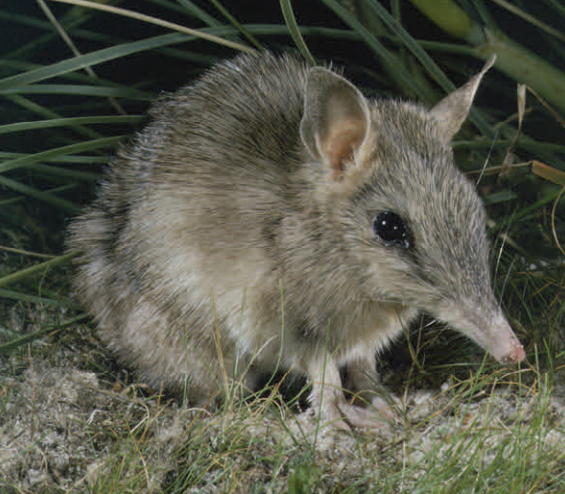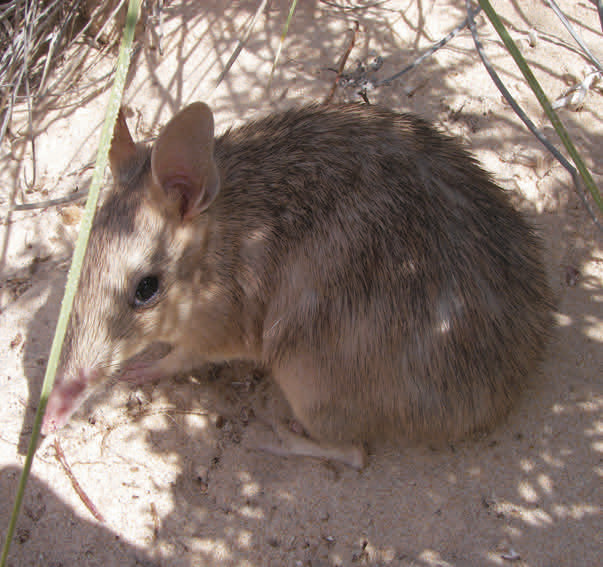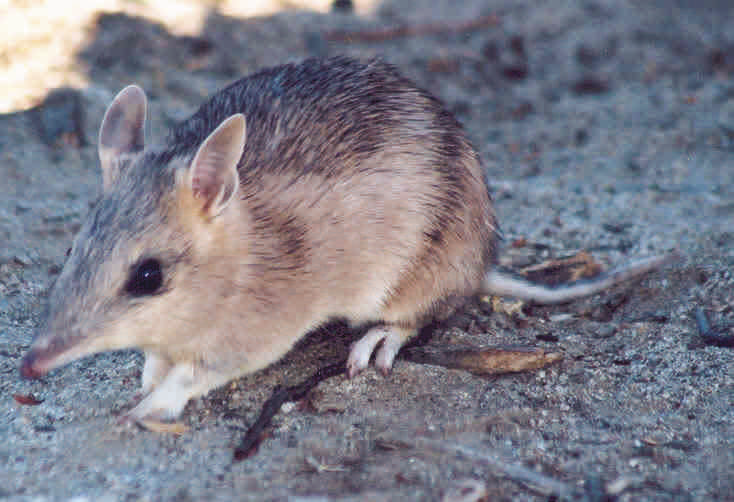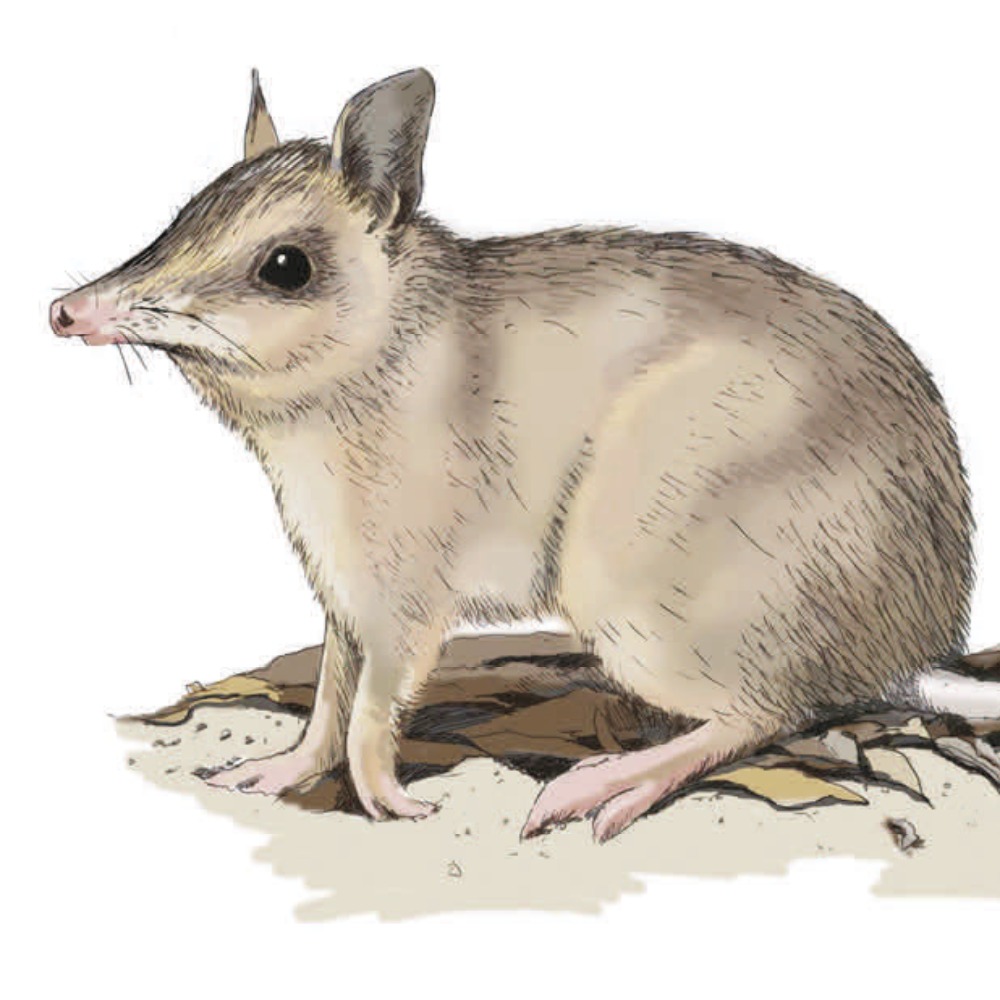Shark Bay Bandicoot
Shark Bay bandicoot
Perameles bougainville
Description

| Head-body 200mm |
Tail 91-93mm |
Weight 200-250g |
This smallest species of bandicoot is also known as the marl. It has large erect pointed ears, a long tapered snout and a short tail. Its fur is light brownish-grey with two or three dark bars across the hindquarters. The chin, underbelly and feet are pale. Females are larger than males. Its delicate appearance masks its hostile temperament—some bandicoots lose part of their tails during fights with other bandicoots.
Diet and habitat

Shark Bay bandicoots are nocturnal and omnivorous. At night they hunt and dig for invertebrates, other small animals, seeds, roots and herbs. By day they shelter in grassy nests hidden in hollows, or leaf litter under shrubs. They are quick and can jump straight into the air and change directions to snatch fast-moving prey.
Breeding

| Gestation 12-13 days |
No. young 2-3 |
Weaned 60-75 days |
Breeding coincides with resources brought by rainfall—generally in winter/spring. Females begin breeding at 3 to 5 months of age and carry 1 to 3 young in backward-facing pouches, which prevent soil from entering while digging. Young bandicoots are independent after two weeks outside the pouch. They can live four years or more.
Distribution

Once common throughout southern arid regions, marl populations became extinct on the mainland in the 1940s, leaving wild populations only on Bernier and Dorre islands in Shark Bay. They have been translocated to other feral free sites, including Faure Island, and will be reintroduced to Dirk Hartog Island as part of the Return to 1616 project. The Shark Bay bandicoot was previously known as the western barred bandicoot.
Status

Introduced predators (feral cats and foxes) pose the greatest threat to the Shark Bay bandicoot. A papilloma virus is present in the Bernier Island population but not the bandicoots on Dorre Island.
Fact sheet
SHARK BAY
World Heritage



